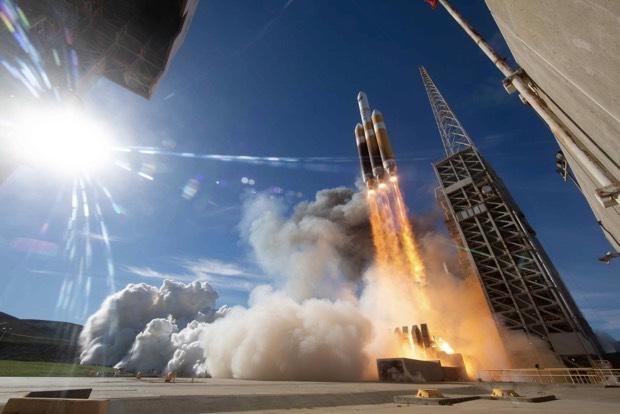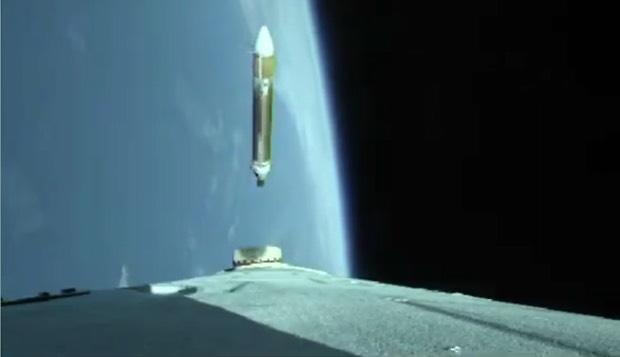A United Launch Alliance Delta 4 Heavy, one of the most powerful rockets in the U.S. inventory, shot away from the California's coast atop a torrent of fiery exhaust Saturday, putting on a spectacular show as it boosted a classified National Reconnaissance Office spy satellite toward orbit.
Running more than a month late because of weather and technical problems, the hydrogen-fueled engines at the base of the Delta 4's three side-by-side common core boosters ignited at 11:05 a.m. PST (GMT-8), shattering the morning calm with a thundering rush of brilliant orange flame and billowing clouds of exhaust.
An instant later, the 23-story-tall orange-and-white rocket was released from launch complex 6 at Vandenberg Air Force Base northwest of Los Angles and the huge booster began accelerating skyward on 2.1 million pounds of thrust.
Spectacular "rocketcam" views showed the California coast dropping away below with Earth's limb and the deep black of space quickly coming into view.
The early moments of the flight appeared normal as the rocket climbed out of the dense lower atmosphere, arcing away to the south over the Pacific Ocean. The two side boosters shut down and fell away as expected about four minutes after liftoff.
The central core booster's Aerojet Rocketdyne RS-68A engine continued firing for another minute and a half before it, too, shut down and fell away from the fast-moving second stage. A few seconds later, the upper stage's single RL10B-2 engine ignited to continue the climb to space.
Now well out of the lower atmosphere, the protective nose cone around the secret satellite payload split apart and fell away, exposing the spacecraft to space. And at that point, as usual with classified NRO missions, United Launch Alliance ended video coverage and commentary.
While no details about the NROL-71 mission have been released, independent satellite analysts said late last year it may be an advanced block 5 KH-11 optical imaging reconnaissance satellite.
Such satellites typically are launched into "sun-synchronous" orbits tilted roughly 97 degrees to the equator that ensure spacecraft pass over every point on the globe, at the same time and with similar lighting conditions, as the planet rotates below.
But based on a variety of factors, including safety warnings about where the Delta 4's second stage was predicted to fall back into the atmosphere after satellite separation, it appears the satellite was bound for an orbit with an inclination of about 74 degrees, one that would permit imaging under a variety of lighting conditions.
As with all such launches, a cadre of veteran amateur satellite trackers around the world planned to be on watch in the days and weeks ahead, on the lookout for the NROL-71 payload as it passes overhead to glean additional details about its orbit and, in turn, what sort of mission it might be conducting.
Whatever it is, the satellite had a longer-than-usual wait for launch.
An initial launch try Dec. 7 was called off because of a telemetry problem and an attempt the next day was stopped at the T-minus 7.5-second mark due to an intermittent signal in another system.
A third launch attempt Dec. 18 was halted because of high winds and a fourth try the next day was scrubbed when sensors detected higher-than-allowable concentrations of hydrogen in the rocket's first stage engine compartment. Engineers eventually traced the problem to a leaking valve, clearing the way for Saturday's launch.
https://www.cbsnews.com/news/delta-4-rocket-boosts-classified-spy-satellite-to-space-vandenberg-air-force-base/Bagikan Berita Ini
















0 Response to "U.S. spy satellite launched into orbit from California - CBS News"
Post a Comment